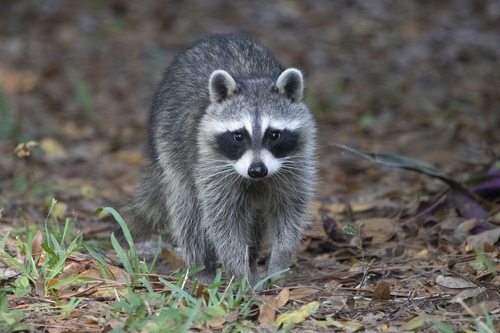
Raccoon
Famed for its masked face and nimble paws, the raccoon (Procyon lotor) thrives in varied environments, from woods to cities. This clever, nocturnal omnivore often 'washes' its food and plays a crucial role in maintaining ecological balance by controlling pest populations and aiding seed dispersal.
2-3 years
Lifespan
3.5 - 9.0 kg
Weight
Brown, Grey, Black, White
Color
15 mph
Top Speed
Least Concern
Conservation Status
Increasing
Population Trend
Distribution Range of the Raccoon
Procyon lotor, commonly known as the raccoon, is native to North America. Its geographical distribution spans from southern Canada through most of the United States and into the northern parts of South America, including specific regions like southern Canada, the contiguous United States, and parts of Mexico. Raccoons have also been introduced to parts of Europe and Japan, where they have established populations.
Raccoon's Habitat
Environmental Conditions
Raccoons are highly adaptable animals that can thrive in a variety of environmental conditions. They are commonly found in areas with access to water bodies, such as rivers, lakes, and marshes. Typical climates include temperate, subtropical, and tropical regions. Raccoons prefer mixed forest areas, urban and suburban settings, coastal marshes, and dense forests.
Ecological Niche
As omnivorous mammals, raccoons play a crucial role in their ecosystems. They exploit diverse food sources, including fruits, nuts, insects, small animals, and human refuse. Their adaptability to various habitats and dietary resources allows them to occupy a broad ecological niche. Raccoons typically inhabit areas with abundant food and shelter options, capable of living in both rural and urban environments.
Copyright @ Nature Style Limited. All Rights Reserved.
 English
English